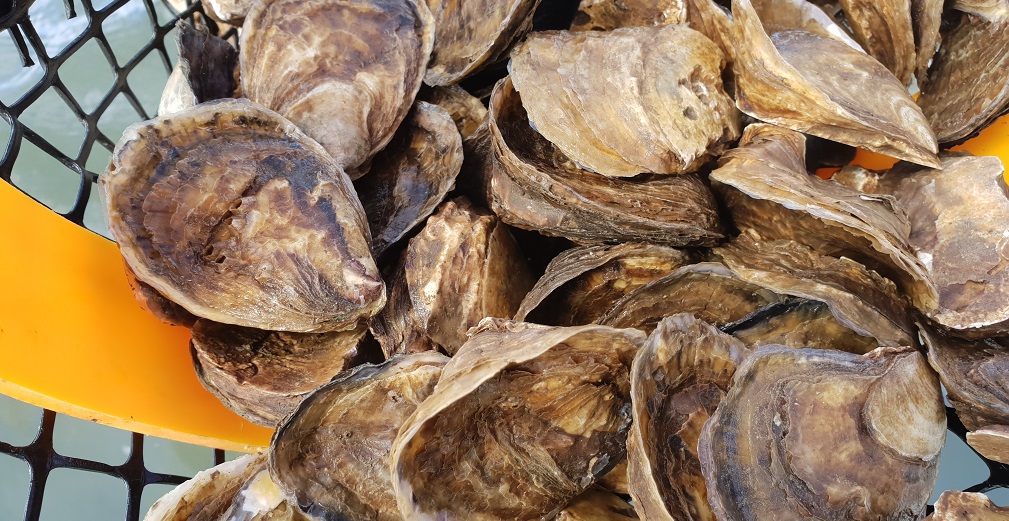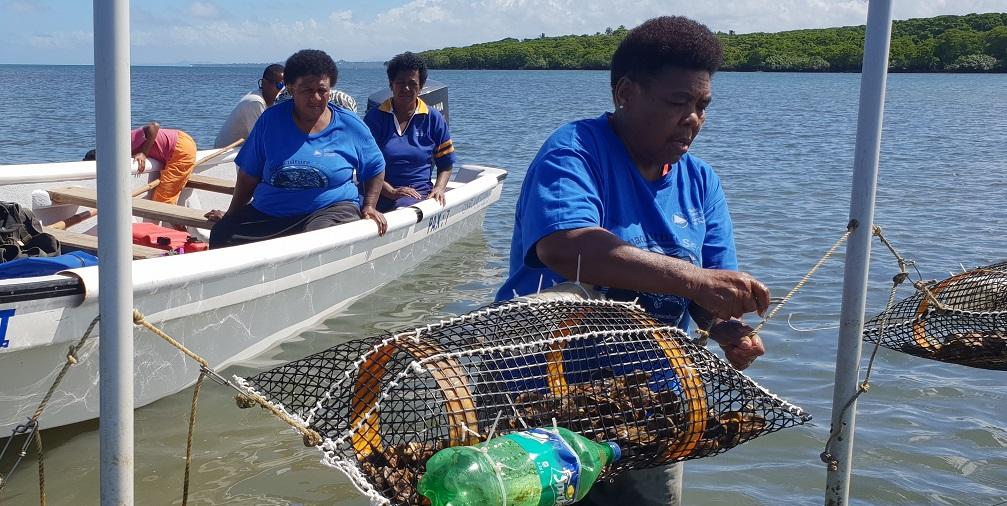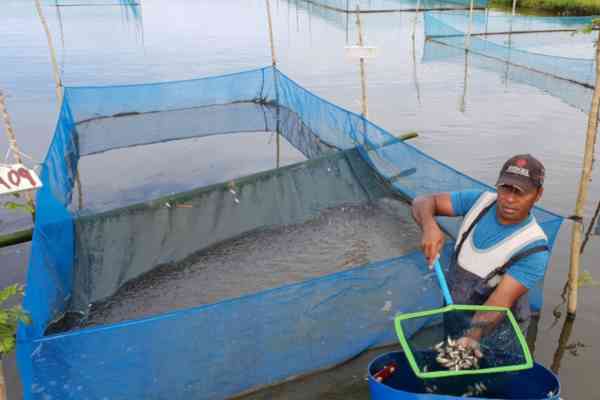(disponible en anglais uniquement)
Fiji’s Muanaira Womens Group sees promise in pilot mangrove oyster farm
It’s hard work walking over sharp shells in the mud, reaching in amongst dense mangrove roots and chipping off oysters. But members of Muanaira Womens Group have been doing this work for years, harvesting the oysters that cling to the roots of mangroves in the Rewa delta and dragging them back in buckets to be sorted and prepared. Oysters here are a key part of life, used for consumption, for traditional purposes, and as a source of income when sold in Suva market as shelled oyster meat.
Scientists of Fisheries Research at Fiji Ministry of Fisheries have teamed up with SPC FAME aquaculture staff and the Vutia community to find out if there’s an easier way to ensure a steady supply of edible oysters.
Observation of aquaculture techniques used overseas, and at Mago Island in Fiji, guided a spat-catching trial that started within the Vutia fishing grounds late last year when plastic sticks were set on wooden racks in shallow water. The baby oysters that settled onto the sticks were collected in February this year as roughly ten-cent-sized shells, then counted and transferred to plastic-mesh baskets hanging on stakes. After three months in culture, these oysters were checked and found to have grown rapidly.
The Muanaira Womens Group members are impressed by the size of oysters after only 3 months. Already many are about 3 ½ inches long and 2 inches wide. The fine-mesh nursery bags were starting to look very full, and the oysters needed thinning out. New bags of wider mesh-size were made on-shore, and the oysters size-graded and counted into the new baskets. These were then re-attached to the poles that make up the Pilot Project farm, where the baskets hang in the sea with a rocking motion to produce nicely-shaped oysters with a deep cup.

It normally takes one and a half years to produce a good-sized edible oyster, but it looks like these ones could be ready for harvest in about one year.
With these promising results, the members of the Muanaira Womens Group are hopeful that their oysters will be more plentiful, easier to harvest, and provide more income to their community for generations to come.
This trial is being co-funded by Fiji Ministry of Fisheries and SPC FAME Aquaculture Section. SPC’s contribution is being made through the Sustainable Pacific Aquaculture Development Project (PacAqua), funded by the Ministry of Foreign Affairs and Trade (MFAT) under the New Zealand Aid Programme.
For more information:
Contact Robert Jimmy, SPC Aquaculture Advisor, Fisheries Aquaculture and Marine Ecosystems FAME Division, [email protected]

